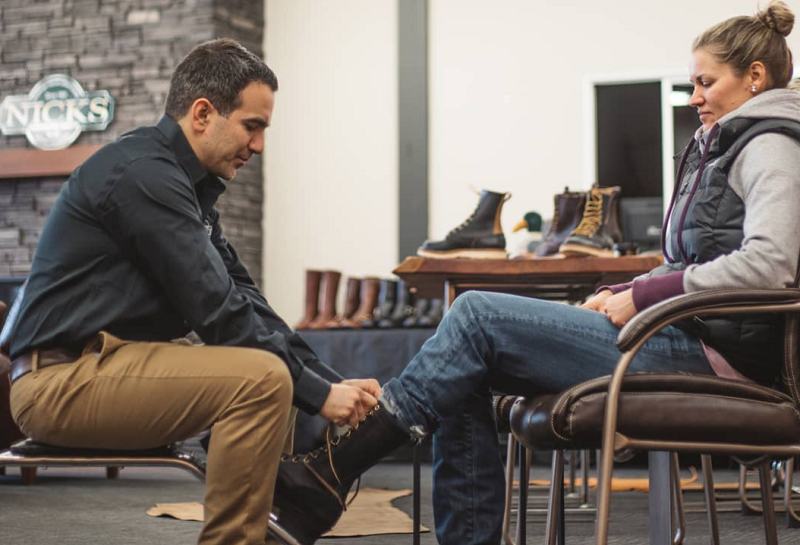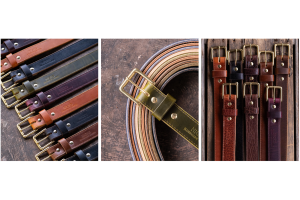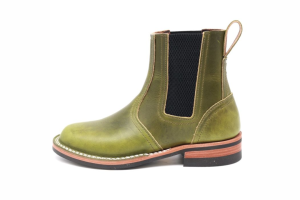How To Tell If You Laced Your Work Boots Correctly

With sneakers you can just loop, swoop and pull, but it's just not that simple when it comes to Work Boots. Lacing them correctly isn't terrifically complicated, but you will know when you've done it wrong.
Incorrect lacing on work boots will present itself in the form of too little support in key areas, shifting feet when walking up or downhill. Likewise, boots that aren't laced correctly can be too tight, pinching in key areas and leading to merely niggling to aggravating discomfort, depending on how badly it's done.
How To Tell If Your Work Boots Are Laced Incorrectly

When you've laced your work boots correctly, they fit snugly but comfortably. You have good support at the heel and ankle, there's good support in the arch, and the boot generally acts in concert with your foot.
This is why so many people keep coming back to Nicks Handmade Boots for their quality footwear. Quality custom work boots keep your feet happy and take the foot, lower leg and even lower back pain out of a hard day's work.
However, when they aren't laced correctly, they will be either too tight in key areas or too loose in key areas.
Boots that are laced too tight will pinch, especially at the top of the foot and the calf at the mouth of the boot. This means that the boot is essentially closing around your calf, pinching it and that the boot is not flexing to the correct degree at the top of the foot, which is essential for walking and especially when you work outdoors.
The last thing you need at the next logging site or wildland fire ground is footwear that makes your job even more uncomfortable.
If too loose, if due to how you've laced your boots, your feet will shift inside the boot when walking up or downhill. You'll notice you don't have adequate support, and you'll feel like you're wearing a warehouse with a tread, and that's no good.
Basically, you'll know very quickly if your boots aren't laced correctly.
Best Practice For Lacing Your Work Boots: The 2-1-3 Method
To get the best fit, support, and function with your boots, we recommend using the 2-1-3 method of lacing. This is a lacing pattern for work boots or hiking boots, which gives good support to the ankle and heel while allowing sufficient flexibility in the boot to avoid pinching.
The 2-1-3 method concerns mainly the first three hooks on the upper half of the boot. The eyelets are laced as normal.
How it's done is that the laces are taken up to the second pair of hooks from the bottom first, then down to the first pair of hooks from the bottom, then up to the third pair of hooks. From there, lace each pair of hooks as normal. This creates a star-like pattern in the lacing and prevents your boots from pinching at the top of the foot while still fully supporting the heel.
It's an old trick, used by hikers, military personnel and outdoorsmen for decades, and we've found that it's also what creates the best fit for your boots in the field. Of course, You need laces that can last and can withstand the pressure of daily strain. Take a look here if you need some quality boot laces, for $10 dollars it may make sense to replace.
After lacing, you should have at a good thumb's width between the top of your big toe and the end of the toe box, and there should be two fingers' width between the boot upper and the tongue under the laces.





